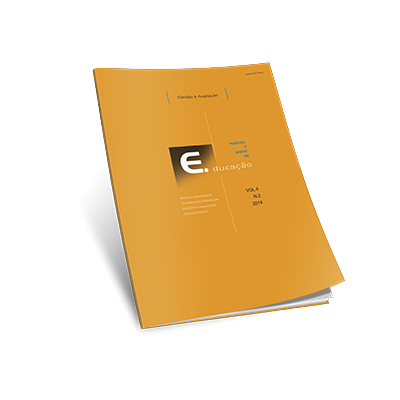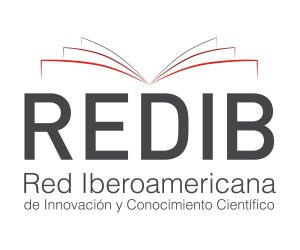Attitudes, teacher strategies and achievement
Palavras-chave:
Progress in International Reading Literacy Study – PIRLS 2006, Availability of School Resources (ASR), Home-School Involvement (HSI)Resumo
International evidence on the relationship between reading achievement and attitudes towards reading mostly shows a positive association between one and another. If that is the case, one could intuitively consider strategies adopted by teachers in the classroom as a way to motivate their students to read more and thus enhance their learning and boost student reading scores.
This paper examines associations between students’ attitudes towards reading, instructional strategies adopted by their teachers in the classroom, and reading achievement observed for the German sample at the 2006 edition of the Progress in International Reading Literacy Study – PIRLS 2006. Using internationally recognized large scale assessment data and relevant literature, the present article tests aspects of Walberg’s model of chief productivity factors in school learning (REYNOLDS; WALBERG, 1992; WALBERG, 1981, 1986), in an attempt to draw some trends that might be useful for future research in Germany and abroad. The coming sections are structured as follows: section 2 highlights the relevant literature on student attitudes, teacher strategies and achievement, and the Walberg’s model of educational productivity; section 3 presents the hypotheses to be tested, the databased to be used and the limitations of the present study; section 4 details the adopted multilevel model, its variables and results; section 5 concludes.
Downloads
Referências
BLATCHFORD, P. et al. A study of class size effects in English school reception year classes. British Educational Research Journal, v. 28, n. 2, p. 169–185, 2002.
BLATCHFORD, P. et al. Classes, groups and transitions: structures for teaching and learning: Primary Review Research Surveys. Cambridge (UK): University of Cambridge, Faculty of Education, 2008. Disponível em: <http://hdl.handle.net/2428/26653>.
BROOKE, N. The GERES Project: a longitudinal study of the 2005 school generation in Brazil. Revista Electrónica Iberoamericana sobre Calidad, Eficacia y Cambio en Educación, v. 3, n. 1, p. 194–199, 2005.
CARROLL, J. A model of school learning. The Teachers College Record, v. 64, n. 8, p. 723–723, 1963.
COBB, C. W.; DOUGLAS, P. H. A theory of production. The American Economic Review, v. 18, n. 1, p. 139–165, 1928.
CONNOR, C. M. . et al. Instruction, student engagement, and reading skill growth in Reading First classrooms. The Elementary School Journal, v. 109,n. 3, p. 221–250, 2009.
ELLIOTT, E. S.; DWECK, C. S. Goals: An approach to motivation and achievement. Journal of personality and social psychology, v. 54, n. 1, p. 5, 1988.
FRASER, B. J.. et al. Synthesis of educational productivity research. International Journal of Educational Research, v. 11, n. 2, p. 147-252, 1987.
FOY, P.; KENNEDY, A. M. PIRLS 2006 user guide - Supplement 1. Chestnut Hill: International Association for the Evaluation of Educational Achievement (IEA), 2008.
FOY, P.; KENNEDY, A. M. PIRLS 2006 user guide - Supplement 3. Chestnut Hill: International Association for the Evaluation of Educational Achievement (IEA), 2008.
GELMAN, A. et al. Bayesian data analysis. 1st. ed. New York: Chapman & Hall, 1995.
GELMAN, A.; HILL, J. Data analysis using regression and multilevel/hierarchical models. New York: Cambridge University Press, 2007.
GETTINGER, M. Time allocated and time spent relative to time needed for learning as determinants of achievement. Journal of Educational Psychology,v. 77, n. 1, p. 3, 1985.
GNALDI, M. et al. Attitude items and low ability students: The need for a cautious approach to interpretation. Educational Studies, v. 31, n. 2, p. 103–113,2005.
GOLDSTEIN, H. Multilevel statistical models. 4ª. ed. Londres (UK): Wiley,2011. v. 847
GOLDSTEIN, H.; BLATCHFORD, P. Class Size and Educational Achievement: a review of methodology with particular reference to study design [1]. British Educational Research Journal, v. 24, n. 3, p. 255–268, 1998.
HANUSHEK, E.; RIVKIN, S. G.. The distribution of teacher quality and implicationsfor policy. Annual Review of Economics, v. 4, p. 131-157, 2012.
KEITH, T. Z.; COOL, V. A. Testing models of school learning: Effects of quality of instruction, motivation, academic coursework, and homework on academic achievement. School Psychology Quarterly, v. 7, n. 3, p. 207, 1992.
KLUSMANN, U. et al. Teachers’ occupational well-being and quality of instruction: The important role of self-regulatory patterns. Journal of educational psychology, v. 100, n. 3, p. 702, 2008.
KORNELL, N.; METCALFE, J. Study efficacy and the region of proximal learning framework. Journal of Experimental Psychology: Learning, Memory, and Cognition, v. 32, n. 3, p. 609, 2006.
KUKLA-ACEVEDO, S. Do teacher characteristics matter? New results on the effects of teacher preparation on student achievement. Economics of Education Review, v. 28, n. 1, p. 49–57, 2009.
KUSH, J. C.; WATKINS, M. W.; BROOKHART, S. M. The temporal-interactive influence of reading achievement and reading attitude. Educational Research and Evaluation, v. 11, n. 1, p. 29–44, 2005.
LAZARUS, B. D.; CALLAHAN, T. Attitudes toward reading expressed by elementary school students diagnosed with learning disabilities. Reading Psychology, v. 21, n. 4, p. 271–282, 2000.
LEE, V. E. Using hierarchical linear modeling to study social contexts: The case of school effects. Educational Psychologist, v. 35, n. 2, p. 125–141, 2000.
LITTLE, R. J. .; RUBIN, D. B. Statistical analysis with missing data. [S.l.] Wiley New York, 1987. v. 4 LÜDTKE, O. et al. The multilevel latent covariate model: A new, more reliable approach to group-level effects in contextual studies. Psychological Methods, v. 13, n. 3, p. 203, 2008.
LYON, M. A.; GETTINGER, M. Differences in student performance on knowledge, comprehension, and application tasks: Implications for school learning. Journal of educational psychology, v. 77, n. 1, p. 12, 1985.
MARTIN, M. O. et al. PIRLS 2006 international report: IEA’s progress in international reading literacy study in primary schools in 40 countries. Chestnut Hill, Massachussets (USA): International Study Center, Lynch School of Education, Boston College, 2007.
MARTÍNEZ, R. S.; ARICAK, O. T.; JEWELL, J. Influence of reading attitude on reading achievement: A test of the temporal-interaction model. Psychology in the Schools, v. 45, n. 10, p. 1010–1023, 2008.
MULLIS, I. V. . et al. PIRLS 2001 international report: IEA’s study of reading literacy achievement in primary scools in 35 countries. Chestnut Hill, Massachussets (USA): International Study Center, Lynch School of Education, Boston College, 2003.
NASCIMENTO, P. A. M. M. Fatores associados ao desempenho escolar: resultados de um modelo multinível de valor adicionado. Estudos em Avaliação Educacional, v. 51, p. 16–39, abr. 2012.
PALARDY, G. J.; RUMBERGER, R. W. Teacher effectiveness in first grade: The importance of background qualifications, attitudes, and instructional practices for student learning. Educational Evaluation and Policy Analysis, v. 30, n. 2, p. 111–140, 2008.
RAUDENBUSH, S. W.; BRYK, A. S. Hierarchical linear models: Applications and data analysis methods. [S.l.] Sage Publications, Inc, 2002. v. 1
REYNOLDS, A. J.; WALBERG, H. J. A process model of mathematics achievement and attitude. Journal for Research in Mathematics Education, p. 306–328, 1992.
RUSS, K. M. Relating Reading Attitude to Reading Achievement in an East Los Angeles Junior High School. Reading Improvement, v. 26, n. 3, p. 208–14, 1989.
SAINSBURY, M.; SCHAGEN, I. Attitudes to reading at ages nine and eleven. Journal of Research in Reading, v. 27, n. 4, p. 373–386, 2004.
SCHAFER, J. L. Analysis of incomplete multivariate data. Londres (UK): Chapman & Hall/CRC, 1997. v. 72
SKRONDAL, A.; RABE-HESKETH, S. Prediction in multilevel generalized linear models. Journal of the Royal Statistical Society: Series A (Statistics in Society), v. 172, n. 3, p. 659–687, 2009.
SNIJDERS, T. A. B.; BOSKER, R. J. Multilevel analysis: an introduction to basic and advanced multilevel modeling. London: Sage Publications, 1999.
SOARES, T. M. Modelo de três níveis hierárquicos para a proficiência dos alunos de 4a série avaliados no teste de língua portuguesa do SIMAVE/PROEB- 2002. Revista Brasileira de Educação, v. 29, p. 73–87, 2005.
STEELE, F.; VIGNOLES, A.; JENKINS, A. The effect of school resources on pupil attainment: a multilevel simultaneous equation modelling approach. Journal of the Royal Statistical Society: Series A (Statistics in Society), v. 170, n. 3, p. 801–824, 2007.
SWALANDER, L.; TAUBE, K. Influences of family based prerequisites, reading attitude, and self-regulation on reading ability. Contemporary Educational Psychology, v. 32, n. 2, p. 206–230, 2007.
TYMMS, P. Effect sizes in multilevel models. In: SCHAGEN, I.; ELLIOT, K. (Eds.). But what does it mean? The use of effect sizes in educational research. Londres (UK): National Foundation of Educational Research, 2004. p. 55–66.
WALBERG, H. J. A psychological theory of educational productivity. In: FARLEY, F. H.; GORDON, N. (Eds.). Psychology and education. Chicago, Ohio (USA): National Society for the Study of Education, 1981. p. 81–110.
WALBERG, H. J. Synthesis of research on teaching. In: WITTROCK, M. C. (Ed.). Handbook of research on teaching. Nova Iorque (USA): MacMillan, 1986. p. 214–229.
WALBERG, H. J.; TSAI, S. L. Correlates of reading achievement and attitude: A national assessment study. The Journal of Educational Research, v. 78, n. 3, p. 159–167, fev. 1985.
WARM, T. A. Weighted likelihood estimation of ability in item response theory. Psychometrika, v. 54, n. 3, p. 427–450, 1989. Competências do século 21 143
WIGFIELD, A.; ASHER, S. R. Social and motivational influences on reading. In: PEARSON, P. D. et al. (Eds.). Handbook of reading research. Nova Iorque (USA): Longman, 1984. p. 423–452.
WILEY, D. E.; HARNISCHFEGER, A. Explosion of a myth: Quantity of schooling and exposure to instruction, major educational vehicles. Educational Researcher, v. 3, n. 4, p. 7–12, 1974.
WITKOW, M. R.; FULIGNI, A. J. Achievement goals and daily school experiences among adolescents with Asian, Latino, and European American backgrounds. Journal of educational psychology, v. 99, n. 3, p. 584, 2007.
WOOLDRIDGE, J. M. Introductory econometrics: a modern approach. 4ª. ed. Mason, Ohio (USa): South-Western, 2009.
WORRELL, F. C.; ROTH, D. A.; GABELKO, N. H. Elementary reading attitude survey (ERAS) scores in academically talented students. Roeper Review, v. 29, n. 2, p. 119–124, 2006.
WU, M. The role of plausible values in large-scale surveys. Studies in Educational Evaluation, v. 31, n. 2-3, p. 114–128, 2005.






















